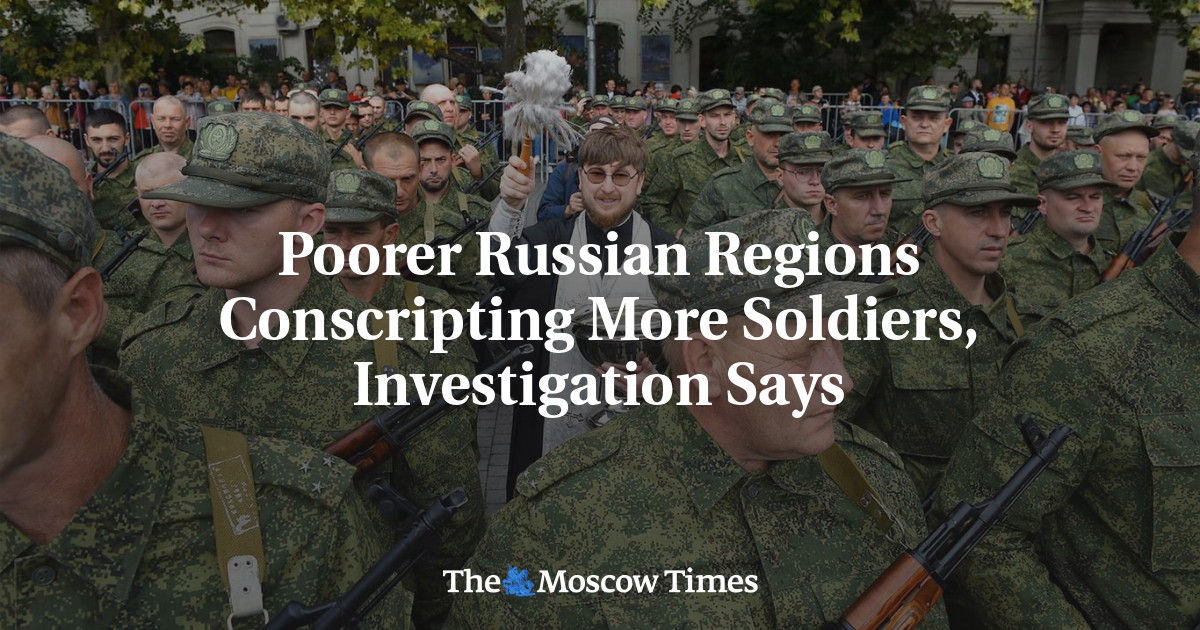
Russian regions experiencing the highest rates of poverty have mobilized the largest share of conscripts to be sent to fight in Ukraine, according to a report published by two teams of independent Russian investigative journalists on Wednesday.
At least 213,200 conscripts from 53 Russian regions have been recruited in the two weeks since Russian President Vladimir Putin announced “partial” mobilization in the country and the military said it planned to call up 300,000 reservists.
Figures for some 32 other Russian regions and republics have not been made available, with authorities in some deeming the information classified.
According to the report by investigative outlet iStories and the war monitoring group Conflict Intelligence Team (CIT), 23 of the 26 regions with the highest proportion of recruits have incomes below the national average.
“We see a correlation between the share of mobilized reservists and poverty in the region,” CIT said.
In such regions the Russian army is often the sole employer and a tool of social mobility, the monitoring group added.
The recruitment drive has caused a labor shortage in Siberia’s Krasnoyarsk region, which reported the highest share of mobilized reservists nationwide at 5.5%, according to iStories.
Southern Russia’s Sevastopol region reported recruiting 4% of reservists, while the republics of Buryatia and Dagestan, two of Russia’s poorest regions that have already suffered the highest death tolls in Ukraine, recruited 3.7% and 2.6% respectively.
By contrast, Moscow and St. Petersburg recruited well below 1% of their reservists, according to iStories and CIT calculations.
Experts attribute the disparity to the authorities’ reluctance to mobilize reservists from more affluent regions to a fear of provoking angry protests.
Nevertheless, thousands took to the streets — and hundreds were subsequently detained — in dozens of Russian cities in the days following Putin’s announcement. Indeed, some of the biggest demonstrations took place in Dagestan and Buryatia.
In both regions, mortality among military-aged men has jumped by as much as 100% since Russia invaded Ukraine in February, the investigation calculated.